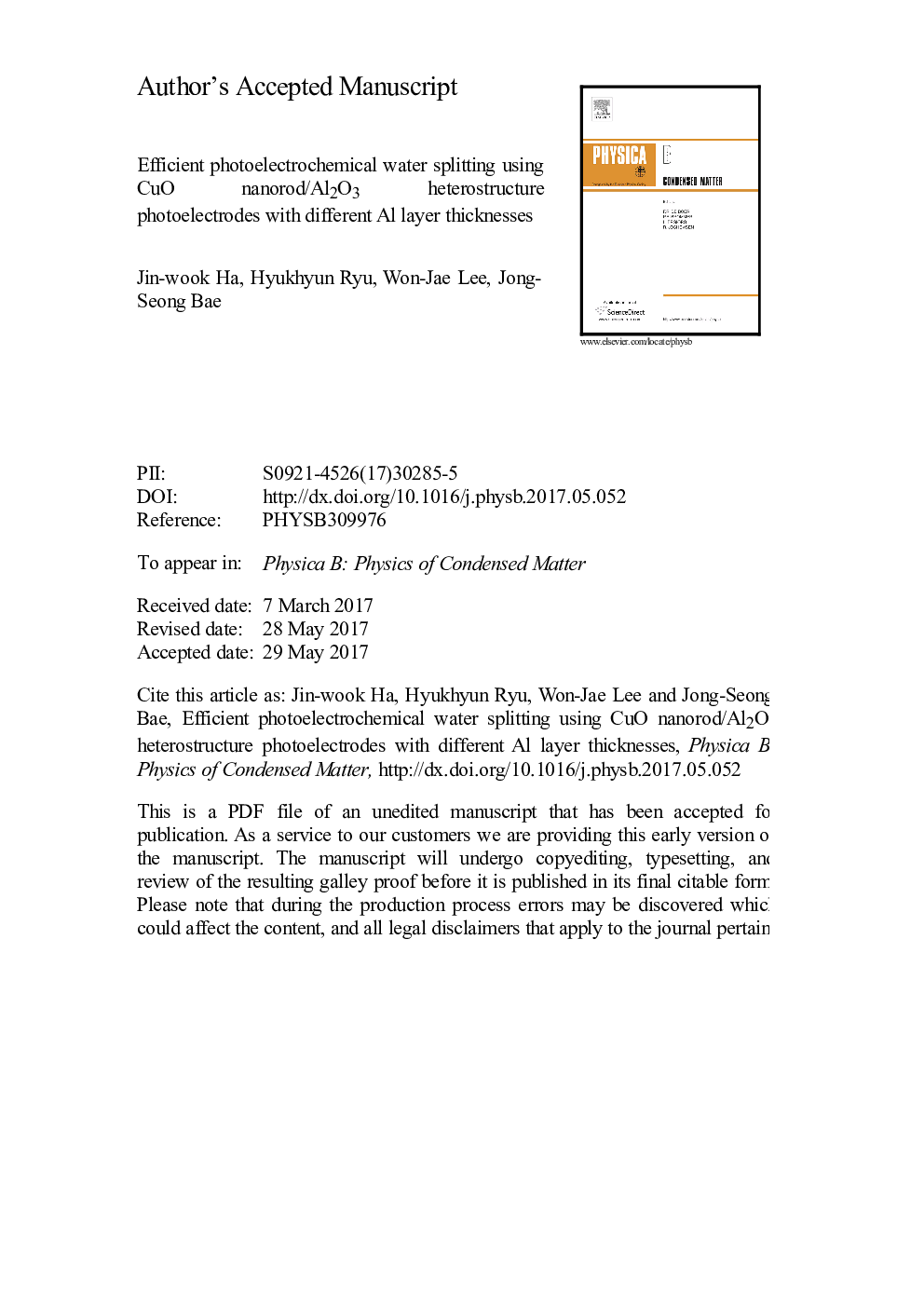| Article ID | Journal | Published Year | Pages | File Type |
|---|---|---|---|---|
| 5491955 | Physica B: Condensed Matter | 2017 | 21 Pages |
Abstract
In this study, an efficient water splitting technique was investigated with CuO nanorod/Al2O3 heterostructure photoelectrodes. Cupric oxide (CuO) nanorods were grown on a fluorine-doped tin oxide (FTO) glass substrate by using modified-chemical bath deposition. In addition, Al thin films were deposited on the CuO nanorods using thermal evaporation, and then, aluminum oxide (Al2O3) layers were formed in open air to create the CuO nanorod/Al2O3 structure. In this study, the morphological, optical and structural properties of CuO nanorod/Al2O3 photoelectrodes were analyzed according to the various thicknesses of the Al layers, and the effects of the thickness on the photoelectrochemical (PEC) properties were mainly discussed. We obtained a maximum photocurrent value of â2.26Â mA/cm2 (â0.55Â V vs. SCE) and a theoretical solar-to-hydrogen (STH) conversion efficiency of 1.61% using the Al 30-nm thick sample, which had the largest amount of the Al2O3 layer, as confirmed by X-ray photoelectron spectroscopy (XPS).
Related Topics
Physical Sciences and Engineering
Physics and Astronomy
Condensed Matter Physics
Authors
Jin-wook Ha, Hyukhyun Ryu, Won-Jae Lee, Jong-Seong Bae,
